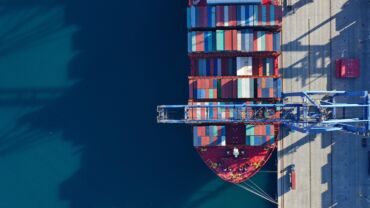Maximizing supply chain efficiency and minimizing costs while managing compliance is a perpetual balancing act for companies as they navigate global trade. Compliance is often seen as a cost center as companies seek to mitigate risk. However, if approached in a strategic way, engaging with the opportunities afforded by the modern regulatory landscape can help companies save money. They can generate value through efficiency gains, as well as duty and fee savings, deferral, and even elimination, plus they can take advantage of other benefits, such as accessing privileged entry status for shipments.
At a recent Thomson Reuters webcast, Liz Connell, Senior Director of Product Management at ONESOURCE Global Trade, Thomson Reuters, and Jeff Roy, VP of Product Management at Infonexis, set out six ways companies can save money in the supply chain:
1. First-sale programs
- A first-sale program allows importers to pay duty on the value of goods originally charged by the factory, instead of on the amount the importer is paying for those goods. So, if an importer buys $60 million of goods a year from an intermediary, and the factory originally charged $50 million, the importer only must pay duty on the $50 million. At a 10% tax rate, this means the importer would stand to save $1 million in duty. “These numbers can really add up as you source more and more goods,” said Roy.
- There are caveats, however. Goods must ultimately be destined for the United States, as the U.S. is the only country in the world that supports first-sale programs. Moreover, it must be a genuine arm’s length transaction. So, oversight is required around how the relationships between the buyer, the seller, and the factory are set up, plus there must be a clear audit trail to demonstrate the actual price charged between companies.
2. Trading companies
- Trading companies allow large organizations to centralize their sourcing operations. Instead of a group’s subsidiaries in different regions, each buying from factories independently, using different business practices, payment terms and currencies, now all transactions go through a central trading company.
- This approach improves visibility across transactions and enhances reporting capabilities across various suppliers, improving treasury functions, driving economies of scale and creating better margin opportunities. Costs can be further reduced by locating trading companies in lower-cost regions with lower tax rates.
3. Component breakouts
- Companies can cut the import duty they pay by breaking their items down into individual components. For example, if a company imports a ski jacket that would cost 30% in duty as an entire product, they could save money by breaking it down into separate parts: the outer shell, the liner, and the hanger, which all have different duty rates. For this to work, suppliers must provide the appropriate documentation for each component upfront.
4. De Minimis shipments
- Under De Minimis provisions in the U.S. Trade Facilitation and Trade Enforcement Act, shipments worth up to $800 made to a single importer can be imported into the U.S. with no duties, taxes or fees – per day. This is therefore a common option for e-commerce shipments where the customer is buying online, and companies have moved their supply chains to new locations to take advantage. Indeed, it’s such a popular route that in 2022 alone, U.S. Customs processed more than $685 million of De Minimis shipments. Connell said, “It is allowing trade to go faster. It’s decreasing costs for consumers. It’s creating less paperwork for customs. So, you can save lots of money.”
- However, concerns around the import of counterfeit, unregulated, or non-compliant goods could create greater scrutiny of the regime, and companies are advised to keep an eye out for regulations to change as a result.
5. Free Trade Agreements
- There are over 400 Free Trade Agreements (FTAs) in the world, which can eliminate duty payments and save companies millions of dollars. Companies must be able to prove that products qualify, so they need to know where they come from and how they are being manufactured. Collecting all the information and managing all the data can be challenging, so it may be sensible to start small with one product and build up from there.
6. Foreign Trade Zones
- Foreign Trade Zones (FTZs) are special areas in a country where you can import goods without paying duties, taxes or fees. Many countries have FTZs, but using the US as an example, duties are only paid once goods leave the FTZ and enter the US. Duty is therefore deferred, and the money can be used to benefit the business. If goods are exported inbound, duty payments can be eliminated. “We’re talking big dollar values and savings opportunities,” Connell said.
- U.S. FTZs allow importers to reduce merchandise processing fees because they only must file entries weekly, rather than individually for every transaction. Manufacturers can also take advantage of “inverted tariff savings”, where they import the goods they need to make their product duty-free and only pay duty on the manufactured product once it leaves the FTZ, which may be at a lower tariff than the component parts.
With so much at stake, no wonder so many companies are looking for ways to save money in their supply chains and turn compliance from a cost into a source of value.
_____________________________________________________________________________________________
Find out how to take advantage of these opportunities by registering to our webcast:
_____________________________________________________________________________________________








